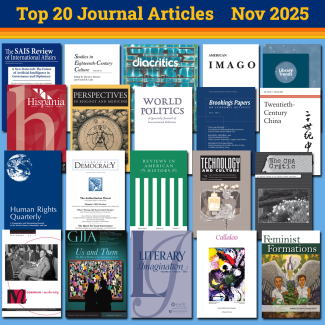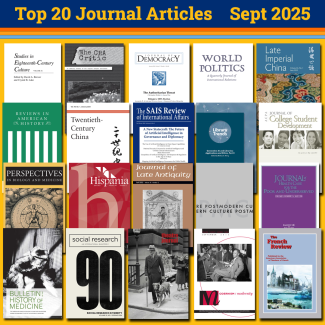
Johns Hopkins UniversityEst. 1876
America’s First Research University
A New Angle on Asian Social Mobility
Scholars have studied the topic of social mobility for Asian Americans for years. But a collection of essays in the most recent issue of the Journal of Asian American Studies took a special look at the topic, said journal editor Rick Bonus. He joined us for a quick Q&A on the issue, which wrapped up the journal's 21st volume.

This collection of essays came together quite serendipitously. Like all other incoming editors, I presume, I had several submissions already brewing on the burner, so to speak, when I stepped on board. So when the staff and I were putting things together, there was no grand design that was on our minds. We put them together, and then, after I read them over and over, certain themes come up. And “social mobility” rose to the top so unquestionably and rather clearly. I was quite delighted!
What surprised you the most from the submissions you received?
“Social mobility” as a topic in Asian American studies is as old as the field itself. But the essays in this volume offer rather new and intriguing ways to engage with it. In a way, the essays surprised me because, save for the first one, the term itself is not directly mentioned as a subject of study within the manuscripts. Each of them was addressing social mobility not in the conventional ways we understand it, but through prisms and perspectives that were unexpected and subtle, but at the same time, really illuminating and provocative. The last essay on “multispecies formation” is the one that really caught my eye in particular. As I allude to in the issue’s introduction, this essay’s spin on social mobility is certainly clever and very instructive on how to think about social mobility beyond the usual.
The essays covered such a broad spectrum, from entrepreneurship to community college and from refugee resettlement to the Black Lives Matter movement. How do you hope this collection informs future scholarship in this area?
We wanted to illustrate in this issue the breadth and depth of our area of study’s coverage of social mobility. We wanted to showcase new and innovative ways of producing knowledge and critique that emblematize where we are in the field and, to a good extent, where we’re headed, or what we stand for and perhaps, even an estimation of how far and deep our knowledge production process take us — even for just a handful of essays and reviews. We wanted to celebrate really good scholarship and really amazing scholars. Hopefully, many of us get inspired and motivated, and proud of where we belong. For these reasons, I was so pleased putting this out, and I was even more pleased when a good number of colleagues noticed our work. It’s an exciting field, and I’m so honored to be a part of it!


